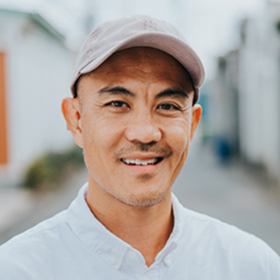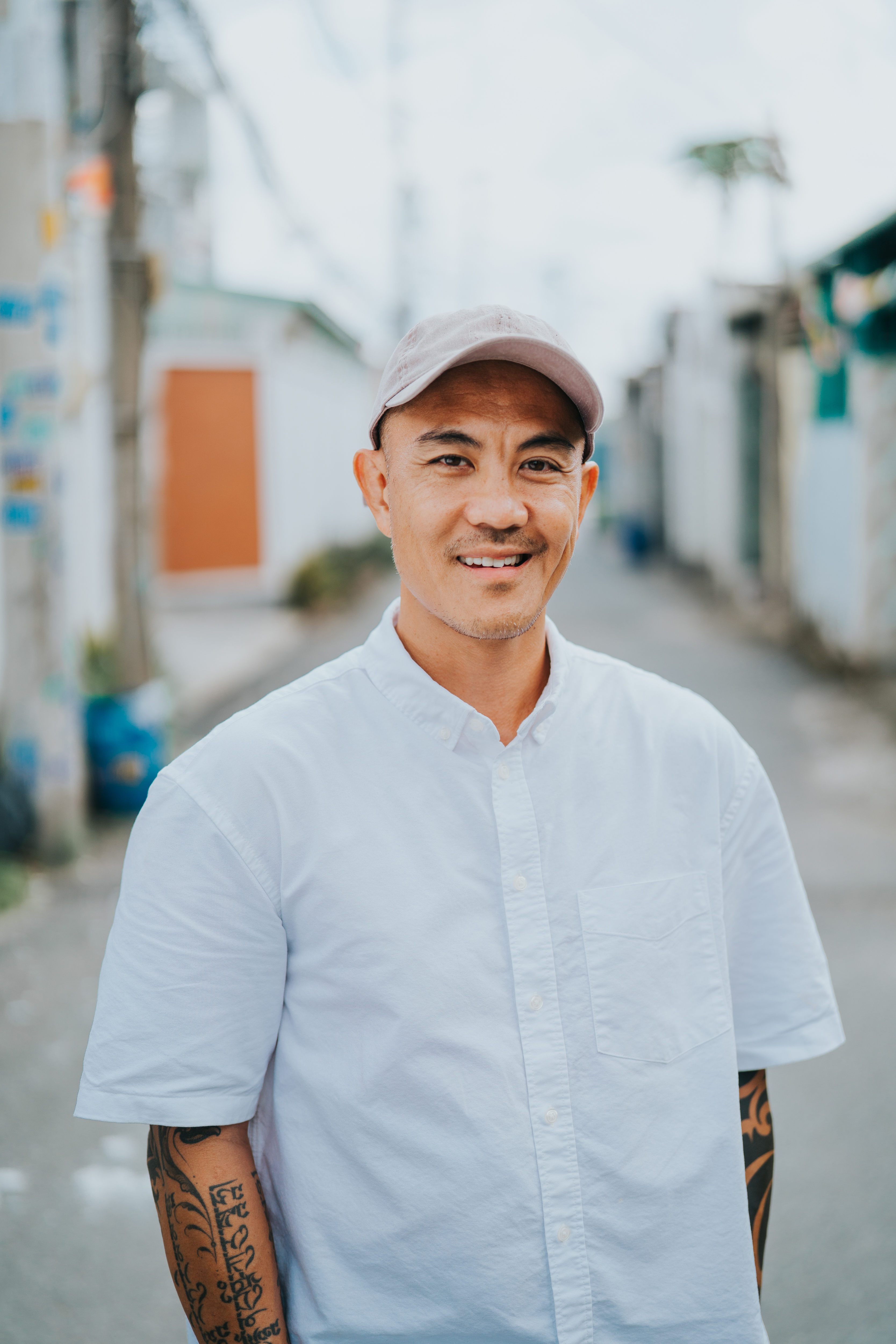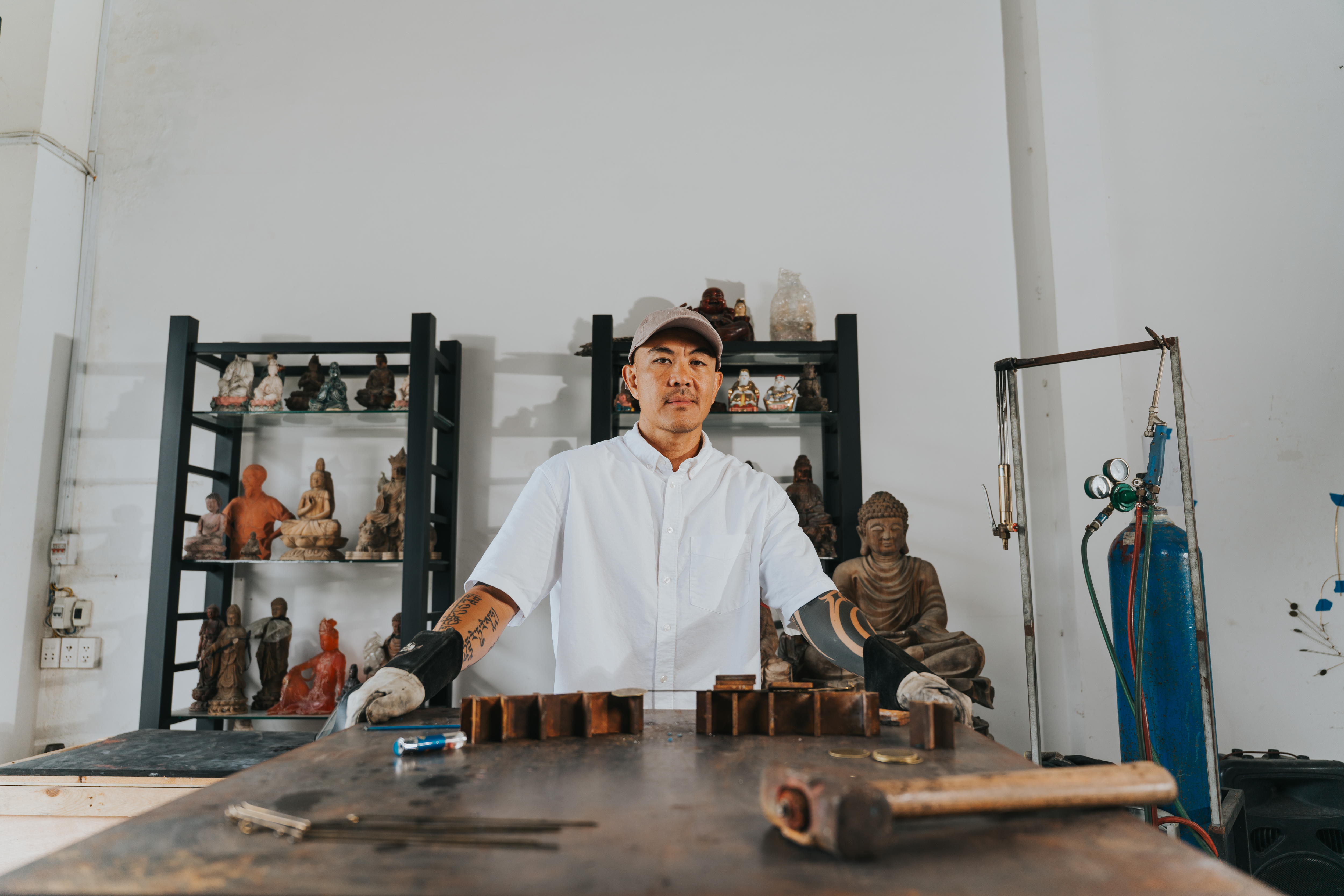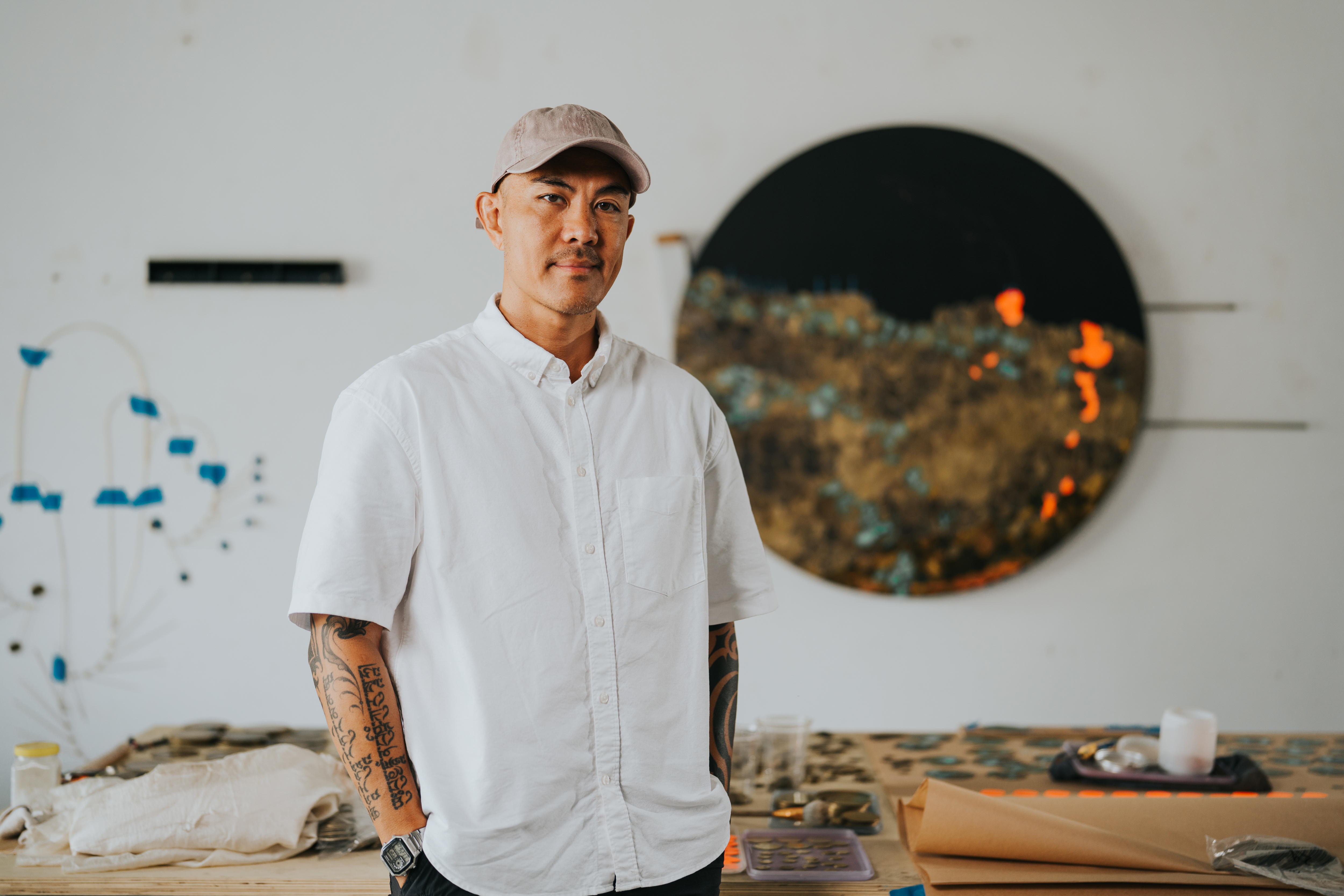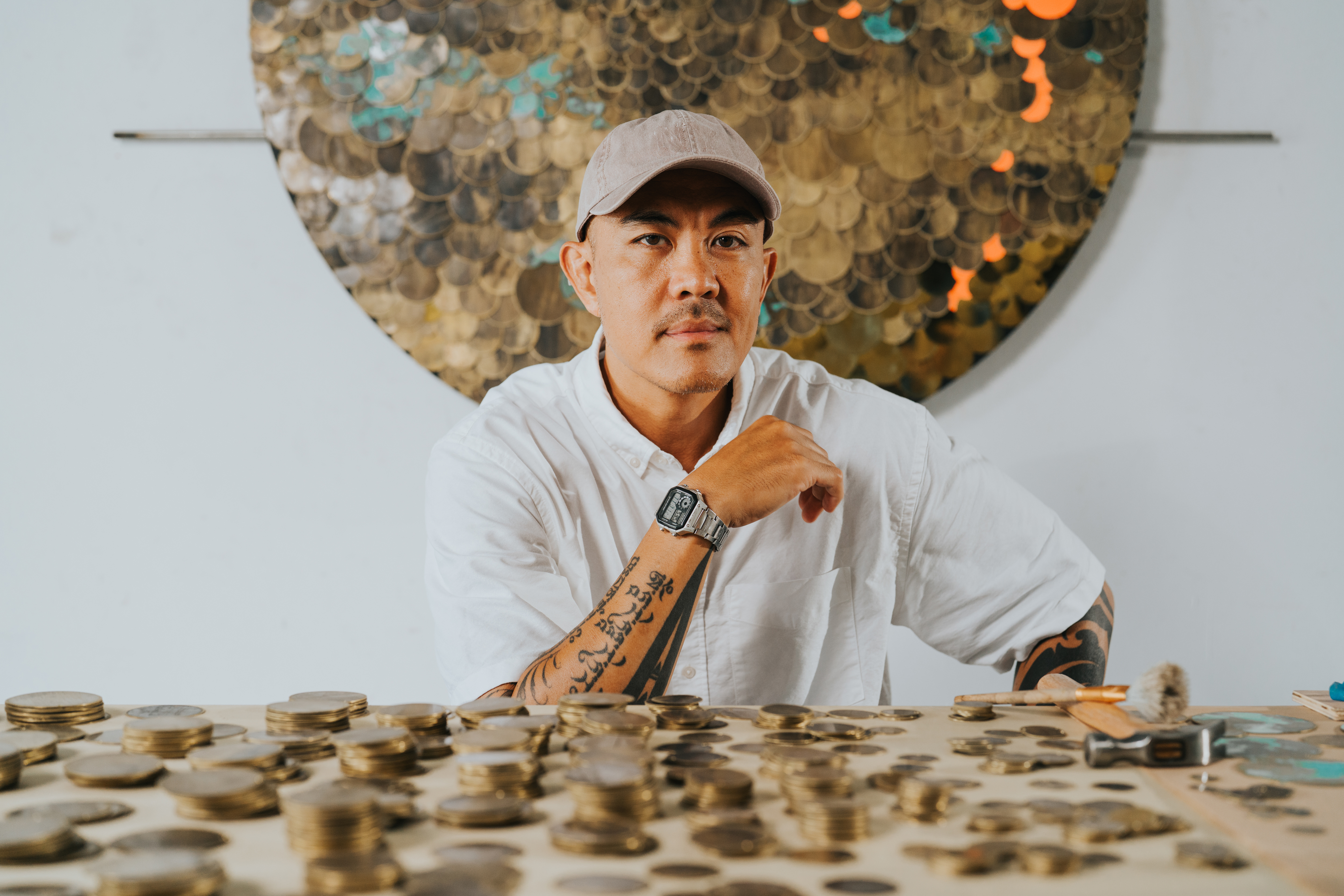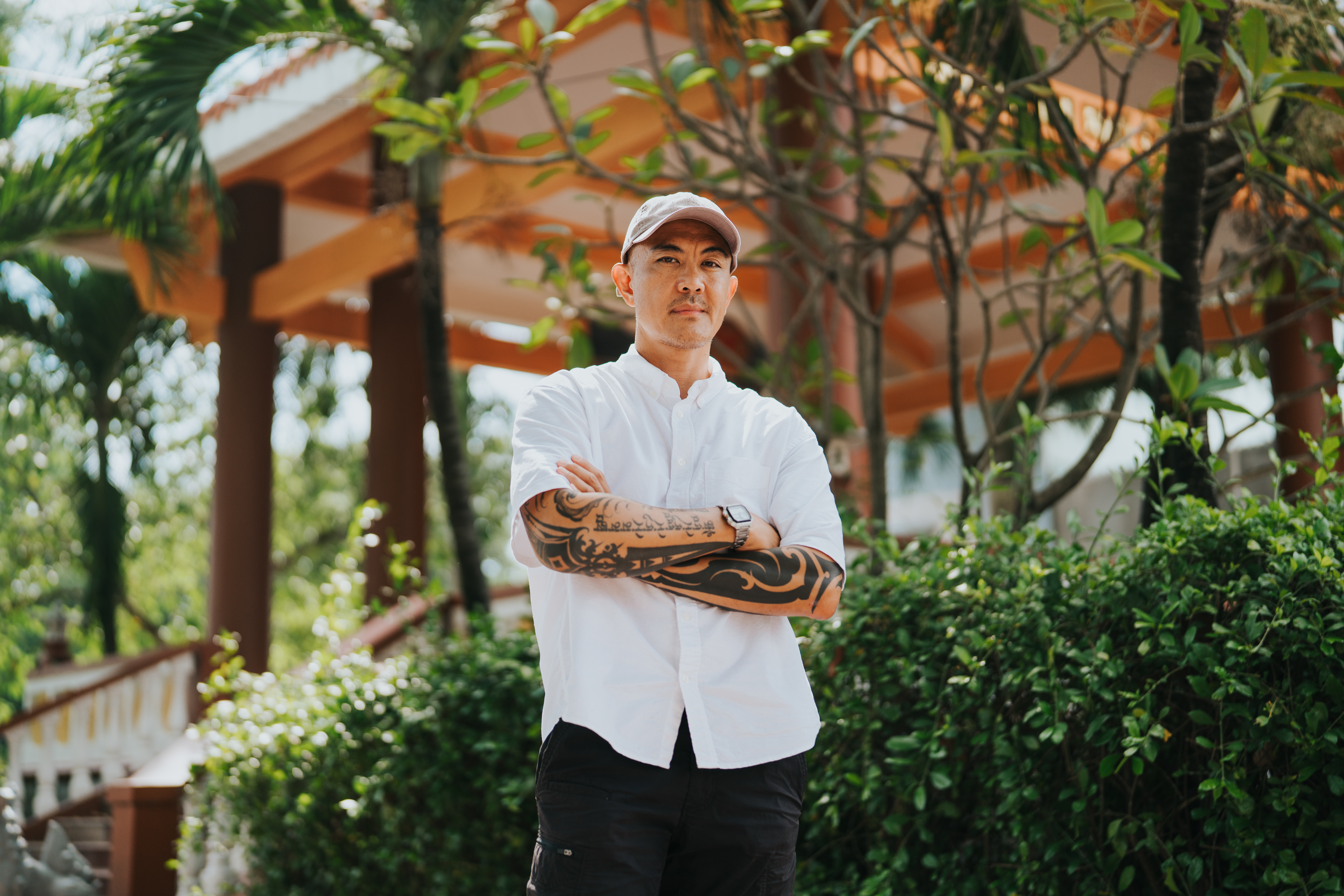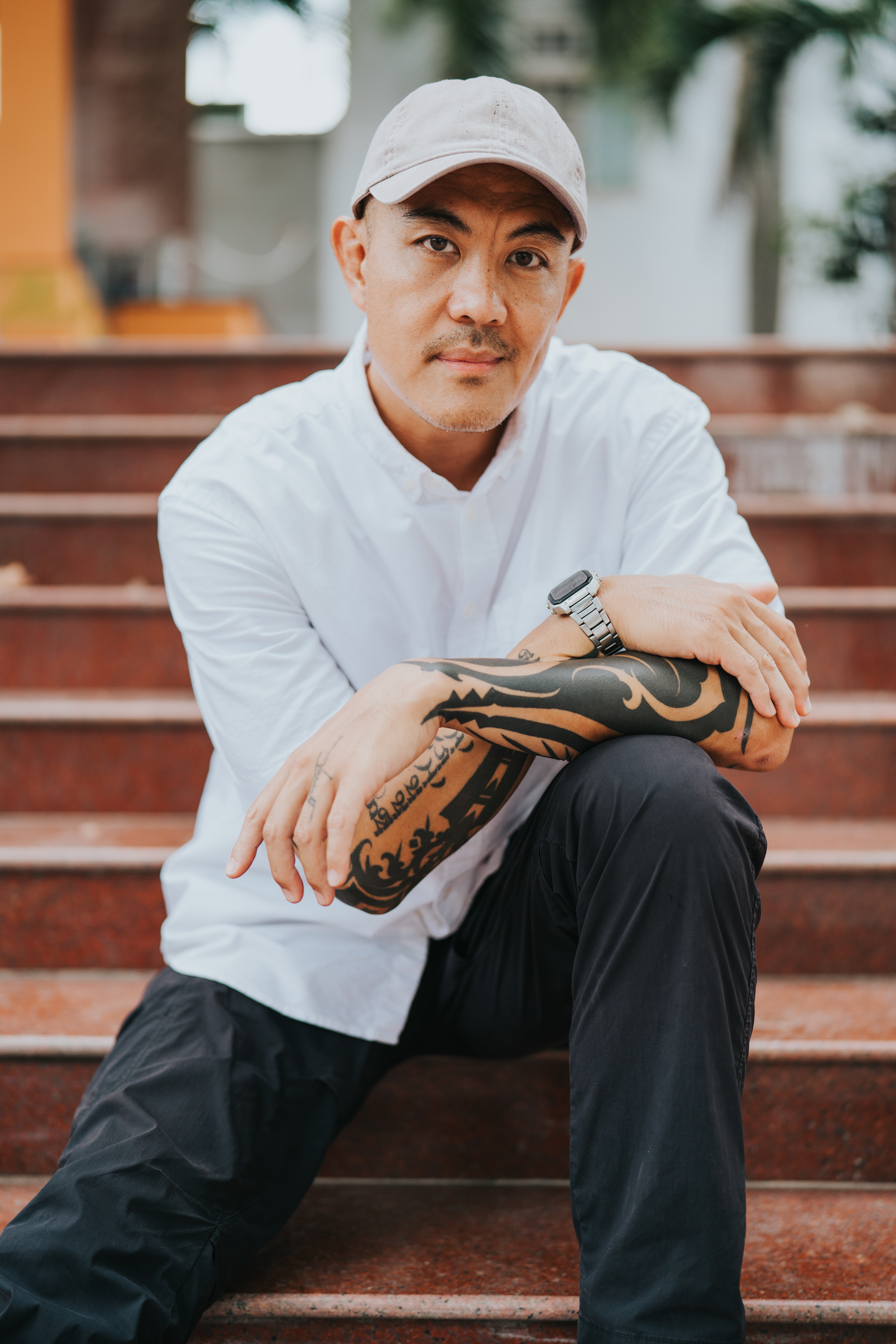About Tuan's Work
Tuan Andrew Nguyen is a multidisciplinary artist giving aesthetic form to the enduring repercussions of violence and dispossession. He grounds his films and sculptures in the histories of communities grappling with intergenerational traumas of war and displacement, in places ranging from his native Vietnam to the Philippines, Senegal, Papua New Guinea, and the United States. Much of his work explores moving images and material objects as repositories of memory and the potential for storytelling to be an instrument of healing and resistance against colonial erasure.
Nguyen shot the lush and poetic short film, The Island (2017), on Pulau Bidong, a tiny island along the Malaysian coast and the site of the longest-running refugee camp after the Vietnam War. Set in an imagined future, the film centers on a fictional character who lived alone among the camp’s abandoned structures for decades. When a scientist washes ashore after the last nuclear war, the two refugees contemplate history, memory, and the ethics of rebuilding human society. Community members are integral collaborators on many of Nguyen’s projects. Their personal testimonies, family artifacts, music, and folklore shape the narratives and installations he assembles. In The Specter of Ancestors Becoming (2019), a 4-channel video installation set in Dakar, he focuses on descendants of Senegalese soldiers from the French colonial army and their Vietnamese wives. Archival photographs, letters, and cross-generation conversations feature prominently in the piece and reveal the legacies of colonial prejudice that the Vietnamese-Senegalese community continues to experience.
Another film, The Unburied Sounds of a Troubled Horizon (2022), is set in Quang Tri, a province in central Vietnam that the United States heavily bombed and that remains littered with unexploded ordnance. The main character in the film, a woman named Nguyet, cares for her mother while running her deceased father’s scrapyard business. As a way of excavating and processing the pain her family and community has endured, she repurposes bomb remnants into shimmering, intricate sculptures reminiscent of works by twentieth-century artist Alexander Calder. Nguyen exhibits the film alongside sculptures he created using bomb casings and war relics from Quang Tri, including singing bowls and mobiles tuned to emit sound in a frequency said to promote healing. With these and other projects, Nguyen recovers histories that would otherwise be lost and pieces together fragmented cultural inheritances for future generations.







